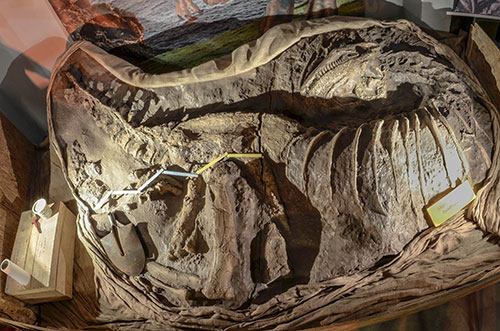After death, most organic beings decay in a relatively short time, due to the combined action of mechanical (blows), chemical (oxidation) and biological agents (bacteria), until they disappear completely.
Nevertheless, sometimes organic remains include a protective material that isolates them from contact with the atmosphere and microorganisms. Even so, the soft parts of the organism are rarely conserved, but generally the harder skeletal pieces are those that fossilize.
There are three ways of fossilization:
- Replacement
The components of the original structure are interchanged molecule by molecule by minerals.
This process can be completed 100% or conserve part of the original chemical composition.
- Mold
Vestiges of the presence or activity of an organism. Within this classification we find eggs, coprolites footsteps, molds of vegetables, etc.
- Preservation
The capacity that some substances have for isolating and protecting organic tissue. Examples: amber, asphalt, ice, etc.
















